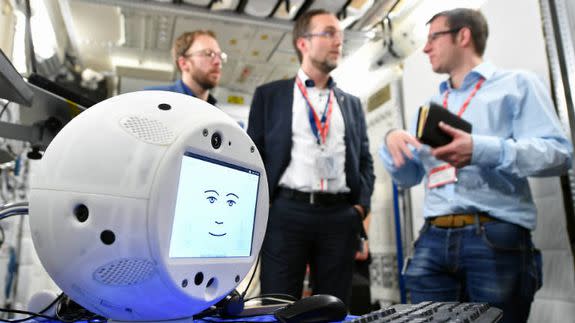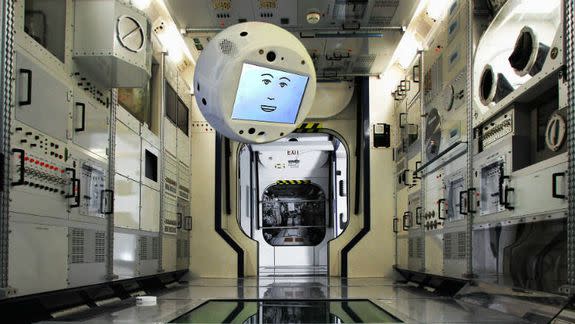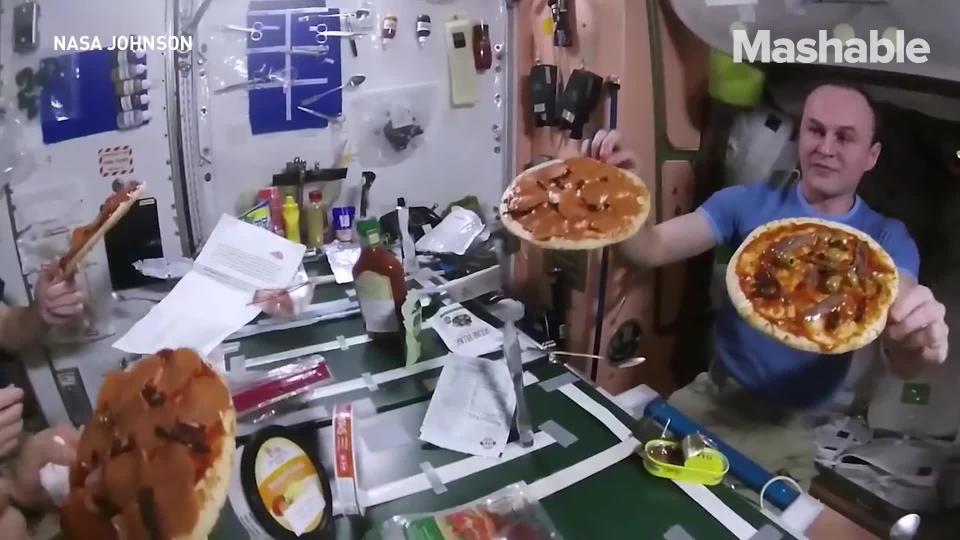Meet the creepy new AI system designed to help astronauts in space
While many of us were sleeping, SpaceX launched tons of supplies to the International Space Station for NASA.
Hitching a ride to the station aboard SpaceX's Dragon capsule is the Crew Interactive Mobile Companion, or CIMON — a new artificial intelligence technology developed by a team of researchers from the European Space Agency, NASA, and IBM.
SEE ALSO: 8 perfect astronaut selfies for when you just need some space
CIMON has a roughly spherical shape, with a childlike drawing of a face on the screen. It's a little... creepy looking.
The AI bot is designed to float around in the space station until an astronaut calls its name. Then, CIMON will navigate through microgravity in the direction of whoever is talking.

Image: NASA
Researchers developed CIMON to assist anyone conducting experiments on station by uploading the procedures and guidance videos that can then be accessed to aid in the experiments.
When an astronaut asks a specific question, CIMON will be able to respond using the entire bank of knowledge stored in the cloud, researcher Christian Karrasch explained during a NASA press conference.
The whole point in these kinds of tools is to help make tasks easier for astronauts in space. Time in space is a precious commodity, so being able to have a tool, like CIMON, help you through basic tasks in a more efficient way could be incredibly useful, particularly on long-duration missions.
The module itself will be the first AI interface of its kind to operate in space when it reaches the space station on July 2.
And even though CIMON is designed to work with anyone, it has been trained to work best with German astronaut Alexander Gerst. He helped pick the language, accent, and face for the AI tool.

Image: NASA
And if you’re already thinking about all of the ways this could go wrong — we're thinking of you, Hal 3,000 — Gerst was one step ahead of you.
According to researchers, the astronaut was particularly adamant about making sure CIMON had an off-switch — this will ensure that CIMON is not recording every conversation on the space station.
Researchers also made sure to include two different operating modes for CIMON. One that only listens when addressed (e.g., “Hey CIMON”). The other passively records at all times, a function that could be particularly useful for time-intensive experiments.
Once at the orbiting laboratory, CIMON will coexist with astronauts for at least the next several months.
The tool is one of 50 experiments sent up to the station aboard the Dragon. Some of the other experiments focus on cancer cell research and crystalline structures.
WATCH: Making pizza in space is incredibly hard, ya'll

